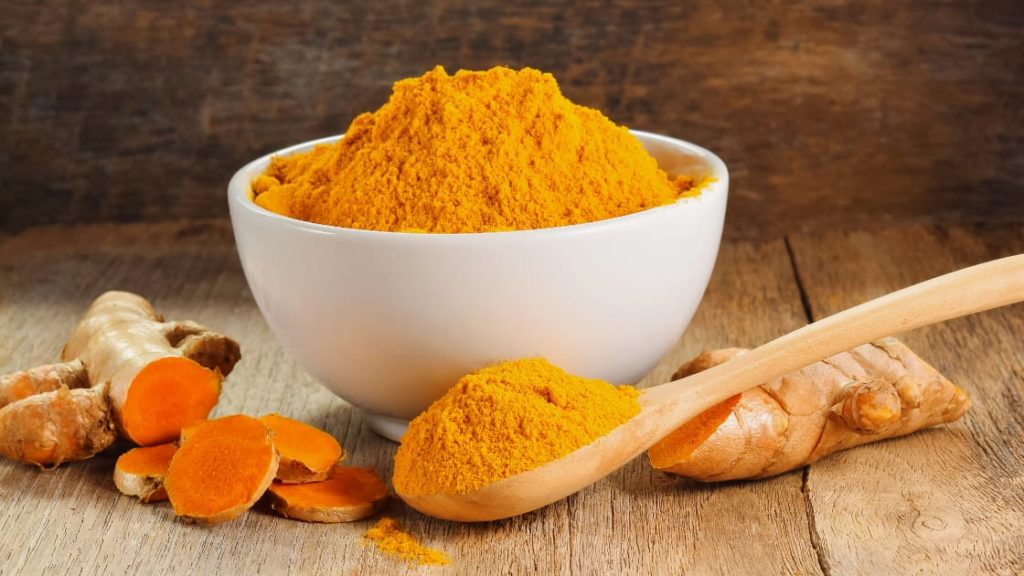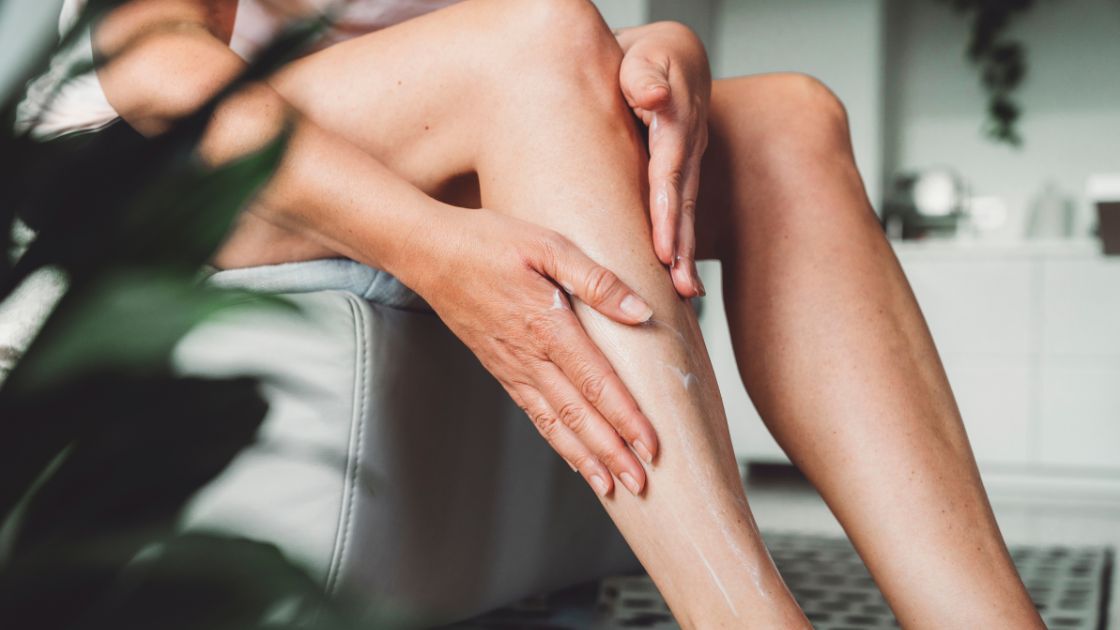The Healing Power of Turmeric

Oh, the versatility of turmeric! It can be boiled into tea, blended into curry, or washed down as a supplement. Whether it’s a raw root, a powdered spice, or a capsule; this brownish-orange superfood is some pretty powerful stuff!
Turmeric has been used for medicinal purposes for centuries, even if it seems to have only gained popularity in recent years. These days, this staple in Indian cooking is being touted as quite the superfood! But why is that so? This member of the ginger family gets a lot of praise for its health benefits, but what exactly are they? Come on, let’s get to the root of this!
Heh heh, root.
Oh, and before I get into the benefits, have you ever heard of turmeric shots? At the end of this article, I’ll post an easy recipe for you. I highly recommend them for athletes and people with labor intensive jobs! But try them even if you’re not one of those things.
The Benefits of Turmeric
Boosts Immunity
You ever wonder why turmeric has that earthy yellow-orange color to it? Me neither, but the reason for it is a yellow-orange component called curcumin. Curcumin is a compound known for its antioxidant, antimicrobial, and anti-inflammatory properties. And what are antioxidants, antimicrobials, and anti-inflammatories good for? Lots of things! But this section is about immunity, so let’s talk about turmeric and immunity.
Are you familiar with free radicals? If not, free radicals are unstable molecules that cause cellular damage, and they’re linked to a whole host of illnesses. And you know who dislikes free radicals more than you do? Antioxidants, that’s who! You have naturally occurring antioxidant enzymes in your body, and they need a little help for optimum functioning. Turmeric, with its antioxidant-antimicrobial-anti-inflammatory properties, can be one of those helpers. Curcumin (the yellow-orange guy) boosts antioxidant activity when it interacts with the enzymes in your body. When antioxidants do their job correctly, they hinder the cellular damage caused by free radicals, and in turn protect you from becoming ill.
But what if you’re already sick? Well, turmeric can help with that too! If you’re enduring a cold or flu, curcumin can interfere with the viral replication process by protecting uninfected cells from free radical damage. This can keep your symptoms from worsening, and speed up your recovery process. Thanks turmeric!
Lowers Risk of Heart Attack
Let’s talk about those anti-inflammatory properties of curcumin again. They do more than boost your immunity. They also help reduce damage to arterial walls. High levels of inflammation can put you at risk for arteriosclerosis, which is the hardening of arteries. This hardening of arteries is a serious threat to your health, as your heart has to work harder to pump blood to your organs and tissues. In some cases, arteriosclerosis can lead to the restriction of blood flow to your organs, putting you at risk for heart attack.
So in addition to getting your essential nutrients — complex carbs, lean proteins, and healthy fats — adding some turmeric to your meal can play a role in cleansing your arteries. Heart disease is the leading cause of death in the US, and there are ways to reduce susceptibility. Be kind to your body by eating natural anti-inflammatories!
Arthritis Relief
Not sure if I mentioned this in the last two sections, but curcumin has anti-inflammatory properties. And those anti-inflammatory properties are lying in wait for the enzymes that cause arthritis pain. That’s what the studies are showing!
In one study, patients with osteoarthritis were placed into two groups. Half the patients were given 50 mg of diclofenac, a non-steroidal anti-inflammatory drug often prescribed for arthritis, twice daily. The other half was given only 500 mg of curcumin, three times daily. The study went on for a month, and the results showed that 94% of the curcumin group and 97% of the diclofenac group reported at least a 50% reduction in arthritis symptoms. Pretty cool, right? But you know what else is interesting? The curcumin group didn’t report any stomach troubles at the end of the study, whereas nearly a third of the diclofenac group did.
If you’re having joint pain, talk to your doctor about the ideal turmeric dosage for you! If you just want to give your joints some preventative care or maintenance, you probably won’t need as much curcumin as a person with arthritis would.
Other Potential Benefits of Turmeric
While some people claim turmeric is the cure all for everything, incredible claims require incredible evidence. Below are two possible benefits of our friend turmeric, but more research is needed before we award it the Nobel Prize in Physiology or Medicine.
Cancer Prevention
Ok, I’m going to start by talking about the inflammatory process, and I’ll use the simplest words I can think of.
Cyclooxygenase-2 (COX-2), lipoxygenase (LOX), and inducible nitric oxide synthase (iNOS) — (three enzymes whose names seem to be lacking in syllables) — are the catalysts that mediate the inflammatory response. Studies have shown that curcumin can block those three enzymes from getting the whole process started.
Excessive levels of inflammation can lead to improper upregulation. Upregulation is the process of increasing a response to a stimulus. Irregular upregulation of COX-2 and iNOS has been associated with inflammatory disorders as well as cancer.
(Those last two paragraphs make me want to never research turmeric again. Sorry if you made it through the entire thing and now have a headache.)
The information above may suggest that turmeric has anti-cancer properties, but the studies are limited. Most of the research has been conducted in laboratories on cells and tissues, and very few studies have been done on humans.
Alzheimer’s Treatment
India has a very low rate of Alzheimer’s disease when compared to other countries. The US has nearly five times India’s prevalence. One of the theories for this is India’s high turmeric consumption.
Alzheimer’s disease, the most common cause of dementia, is a result of plaque development in the brain. Small studies have found that curcumin may help macrophages (specialized cells involved in the detection and destruction of bacteria) clear the amyloid plaque, which could in turn slow the progression of the disease. However, most of the studies linking turmeric ingestion to improved brain health have been conducted on animals. More human research is needed before a more solid conclusion is reached.
Things to Consider
- While turmeric is generally considered safe, the maximum tolerable intake is unknown. We all know the cliche that everything is ok in moderation, so apply that cliche before you consider downing an entire turmeric plant.
- If you’re adding turmeric to a dish, consider adding some black pepper too! Piperine, the alkaloid responsible for pepper’s pungency, has been shown to enhance curcumin absorption in the body. You can even find supplements that combine turmeric and black pepper in the same capsule!
- Try to opt for organic turmeric. Any plant exposed to pesticides can negatively impact its quality.
Turmeric Shots
If you read my previous blog Healthy Quarantine Part 2: Physical Health, you may have already encountered this recipe. If you didn’t get around to making a turmeric shot, here’s another reminder to try it! I take a shot every evening (that I remember to take one) and it does wonders for my aching joints! Being a massage therapist and all, my wrists and digits thank me every time I remember to do it!
Written by: Katrina Jenkins, LMT
Photo Credit: Canva
Resources:
- https://www.ncbi.nlm.nih.gov/pmc/articles/PMC5664031/
- https://www.ncbi.nlm.nih.gov/pmc/articles/PMC5596526/
- https://www.ncbi.nlm.nih.gov/pmc/articles/PMC6509173/
- https://www.mayoclinic.org/diseases-conditions/arteriosclerosis-atherosclerosis/symptoms-causes/syc-20350569
- https://www.health.harvard.edu/blog/curcumin-for-arthritis-does-it-really-work-2019111218290
- https://www.medicalnewstoday.com/articles/327455#Challenges-remain
- https://www.ncbi.nlm.nih.gov/pmc/articles/PMC2781139/
- https://www.ncbi.nlm.nih.gov/pmc/articles/PMC4093167/





